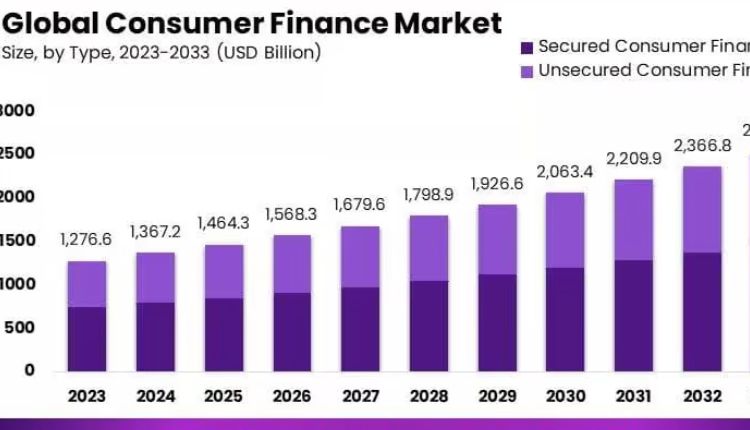E-commerce has a growing significance in economic development. However, the potential dynamics associated with e-commerce have been strongly driven by financial drivers. It is essential to analyse both financial and economic data informing market opportunities and purchasing behaviour to predict upcoming market demands. Essentially, the Cuban Market presents a compelling case scenario by reflecting a unique combination of limited private organisations, socialist economic frameworks, dependence on remittances and an increasing exposure to financial turbulence across the sphere.
Therefore, it is critical to gain insights into the complex e-commerce demands in the Cuban market since there exists an intersection between access to digital infrastructure and the larger macroeconomic complexities. This blog presents a detailed investigation into the influence of both micro and macro-level financial data on demand forecasting in the emerging e-commerce landscape in Cuba, enlightening the key methodological gaps in this context. It highlights how financial data analysis is crucial for understanding these complex market dynamics.
The Theoretical Framework: What Financial Data Can Tell Us
Financial data has a major implication in enabling the analysts to interpret changing buyer behaviour, which anticipates market demands. At its core, the connection between consumption and economic drivers lies in the impact of liquidity, income and wealth on individual spending capabilities. In the Cuban market, this assessment remains essential with the increasing irrelevance of the conventional forecasting methods as a result of limited private-sector operations and operational inconsistency in the contemporary market. It is plausible to build a framework that would help anticipate the growth of e-commerce in the Cuban market by paying attention to the micro- and macro-level financial indicators.
A. Macro-level Financial Indicators:
- GDP Growth: There is a direct implication of economic growth on disposable income, a critical aspect of buyer investments. With the expansion of the gross domestic product, there has been a rise in household earnings, boosting the confidence of consumers and a willingness to invest in discretionary commodities, like products offered by different e-retail platforms. In the Cuban market, improvements in modest GDP indicate a considerable spike in the demand for e-commerce.
- Inflation Rate: The buying power associated with households gets reduced with growing inflation, resulting in a disruption of real income. An evaluated inflation rate would increase the affordability of online products while surpassing demand. On the contrary, stable to low inflation leads to an increasing buyer confidence, motivating households to keep on exploring the e-commerce platforms.
- Current Account Balance and Public Debt: A positive current account balance complemented by a sustained level of debt speaks volumes about the macroeconomic stability of an economy. So far, the Cuban market is concerned, such stability would potentially attract international investments by adding value to liquidity and uplifting the import of products important to e-commerce platforms. On the other hand, an imbalance between the current account balance and public debt results in limited access to products and thereby hinders overall e-commerce demands.
B. Micro-level Financial Indicators:
- Remittance Flows: In the Cuban economy, remittances are noted to be a broader source of household income, primarily shared from the Cuban diaspora. As an outcome, the spending capacity of the purchasers gets potentially bolstered through such funds, directly driving the demand for products purchased often on different e-commerce platforms.
- Foreign Investment and Tourism: The integration of a combination of foreign investment and tourism into the national economy leads to an increasing accessibility to imported services and products. The increased supply in the market improves the operation and attractiveness of e-business platforms even more.
- Consumer Credit and Savings Rates: Although still largely untouched in Cuba, consumer credit and household savings have more importance in theory. The extent to which these two are developed in other economies continues to influence the spending flexibility and the e-business demand in the country. In the case of the Cuban economy, these factors are crucial for predicting the future of e-retailing in the country.
The Cuban Context: Challenges and Opportunities in a Unique Market
1. Cuba’s E-commerce Landscape:
E-business activities within the Cuban economy are relatively new, but are identified primarily due to the rapid growth of the digitisation economy along with the unique political economy of the country. Previously, the state continued dominating the retail business sector, but the contemporary reforms have provided the private entrepreneurs with a certain level of opportunities. There has been a steady e-business growth in the country, essentially following the prevalence of smart devices and digital connectivity since 2018.
The established retailers, including the government-supported e-retail platforms like the domestic e-retail chain named TuEnvio and the Cuban online transaction gateway named EnZona. Nevertheless, there are SMEs across the private sector, using WooCommerce and custom shopping carts to attract both foreign and local consumers, even after the persistent logistical and infrastructural gaps. The travel and tourism sector, on the other hand, keeps on dominating the e-commerce industry with its advanced digital booking networks catering to global travellers.
Similarly, the evolving areas like groceries, household items and remittance-connected e-retail stores continue to capture transactions, indicating larger diversifications in the upcoming era.
2. Data Scarcity and Accessibility in Financial Data Analysis
One of the key challenges associated with e-commerce demand forecasting in Cuba remains the accessibility and security of sensitive financial data. The researchers often struggle with developing strong demand frameworks due to limited, outdated and fragmented official statistical data. Then again, there are transparency gaps with inconsistency and delays in inflation, debt level and GDP growth contributing to the challenges. This gap perpetuates a lack of confidence in how resilient the government’s sources of information are, and adds even more complexity to a comparative market analysis. In this context, the conventional, high-frequency information-based econometric models lose their effectiveness. Alternative data collection methods are necessary to address these gaps.
3. Innovative Approaches: Alternative Data Sources for Robust Data Analysis
Taking the new information into account, research analysts will embrace new approaches, filling the void in the gaps with unique, creative, yet academically viable approaches to the problem. Nevertheless, reports published by international organisations like the World Bank, IMF and UN present macroeconomic understanding that could be employed to gain knowledge regarding national statistics. This data is crucial for developing a robust financial analysis report that accounts for Cuba’s unique economic environment. Similarly, private sector analytics firms and consultancies present sector-wide intelligence, essentially relating to buyer behaviour, trends of mobile adoption and remittance flows. Academic papers could also be employed as a crucial repository of relevant information, as they provide nuanced analytical data about both the consumption patterns and economic governance in Cuba.
The external drivers could also be embraced as proxy parameters. For instance, there exists a direct implication of the US sanctions for imports, investment and liquidity, impacting the overall potential of the e-businesses. Additionally, tourism statistics could be taken into consideration to gain valuable information regarding the growing demands of digital retail platforms since there is a correlation between the inflows of tourism and the increasing accessibility to products, e-retail operations and foreign exchange. The researchers become capable of constructing a credible and holistic scenario relating to the changing demand of e-commerce in the Cuban economy by presenting a triangulation among all these critical data factors.
Methodological Approach: Advanced Financial Data Analysis for Predictive Modelling
1. Choosing the Right Model for Effective Data Analysis
Choosing the most effective forecasting framework remains the utmost essential to analyse existing financial information in the context of the Cuban e-commerce industry. Due to the availability of fragmented market data only, a combination of qualitative and quantitative analysis methods can be used to reach the most viable outcomes.
- Time Series Analysis:
A time series analysis method allows for examining historical buyer details and financial information to reveal cycles, seasonal changes and market trends. For instance, a recurring fluctuation pattern that has a direct impact on the buying power of the consumers would be revealed through analysing remittance inflows per month or yearly inflation rates. Even after having limited information about the Cuban economy, the application of time series frameworks like ARIMA to these limited databases, when used with global comparison, would provide a valuable understanding of changing e-commerce demands.
- Regression Analysis:
A regression analysis model essentially helps define the causal relationships between e-commerce operations and financial drivers. Through regressing sales on e-retail platforms using dependent variables against independent variables like inflation rates, growth in GDP, foreign investment and remittance flows, the analysts become capable of quantifying the direct and strength of these relationships. For now, the application of this model in the Cuban economy is a concern; remittance flow is expected to serve as a critical predictor factor, considering the implications for household consumption. Regression analysis would also help examine the moderating variables, like the implications of tourism inflows for e-retail demand, and hence reshape demand forecasting.
- Qualitative Analysis:
The complex Cuban e-commerce market environment could not be captured authentically using quantitative data only. Integration of qualitative analysis, like consumer surveys, case studies and focus group interviews, adds value to predictive frameworks. For example, an interview involving the Cuban entrepreneurs may present critical insights into consumer interest, logistical complexities and other market drivers. These qualitative factors allow for qualifying statistical outcomes, presenting a context-based and holistic approach to analyse e-commerce demand.
Conclusion
An integration of qualitative analysis, financial data and a range of alternative sources would allow for predicting the demand of e-businesses in the Cuban economy. The macro and micro financial environmental analysis, on the other hand, help assess the challenges with information gaps, revealing the volatile patterns in the complex Cuban e-retail landscape. These days essentially demand for an advanced level of understanding in academic research and financial data analysis. Therefore, students may seek assistance from expert academic service platforms to present an academically sound and evidence-supported financial analysis report.






